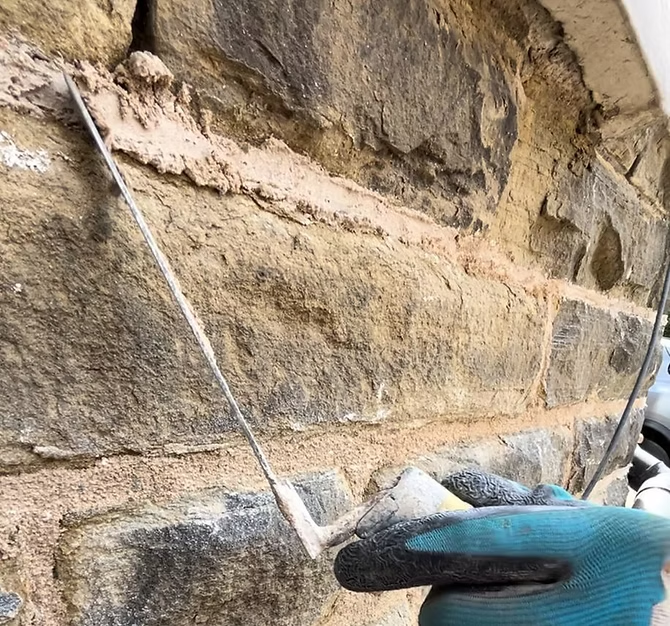Lime mortar has been a cornerstone of construction for centuries, used in the building of iconic structures such as the Great Pyramid of Giza, the Colosseum, and many other historical landmarks. This traditional binding agent, made from a mixture of lime, water, and sand, has been prized for its durability, flexibility, and aesthetic appeal. However, in recent years, concerns have been raised about the potential dangers of lime mortar, particularly in relation to its impact on human health and the environment. In this article, we will delve into the world of lime mortar, exploring its composition, uses, and potential risks, to provide a comprehensive answer to the question: is lime mortar dangerous?
What is Lime Mortar?
Lime mortar is a type of binding agent used in construction, made from a mixture of lime (calcium oxide), water, and sand. The lime is typically obtained from limestone or chalk, which is heated to high temperatures to produce quicklime. This quicklime is then mixed with water to create a paste, which is combined with sand to form a workable mortar. The resulting mixture is highly alkaline, with a pH level of around 12-13, which makes it an effective binding agent for construction materials such as bricks, stones, and concrete blocks.
Uses of Lime Mortar
Lime mortar has been used in construction for thousands of years, and its uses are diverse and widespread. Some of the most common applications of lime mortar include:
- Building conservation: Lime mortar is often used in the restoration and conservation of historic buildings, as it is compatible with traditional materials and can help to preserve the original structure and appearance of the building.
- Masonry construction: Lime mortar is used to bind bricks, stones, and concrete blocks together in the construction of walls, foundations, and other masonry structures.
- Plastering and rendering: Lime mortar is used to create plaster and render finishes for walls and ceilings, providing a durable and breathable surface.
- Pointing and repointing: Lime mortar is used to fill gaps and joints between masonry units, helping to prevent water ingress and damage to the structure.
Potential Risks of Lime Mortar
While lime mortar has many benefits, there are also some potential risks associated with its use. Some of the most significant concerns include:
- Skin and eye irritation: The high alkalinity of lime mortar can cause skin and eye irritation, particularly if it comes into contact with sensitive areas. Prolonged exposure to lime mortar can lead to burns, blisters, and other skin problems.
- Respiratory problems: Inhaling lime dust can cause respiratory problems, including coughing, wheezing, and shortness of breath. This is particularly concerning for people with pre-existing respiratory conditions, such as asthma.
- Environmental impact: The production of lime mortar requires the heating of limestone or chalk, which can release large amounts of carbon dioxide into the atmosphere, contributing to climate change.
- Structural damage: If lime mortar is not mixed or applied correctly, it can lead to structural damage, including cracking, crumbling, and collapse of the building.
Health Risks Associated with Lime Mortar
The health risks associated with lime mortar are a major concern, particularly for people who work with the material on a regular basis. Some of the most significant health risks include:
- Lime dust exposure: Inhaling lime dust can cause respiratory problems, including silicosis, a condition that can lead to scarring of the lungs and other health problems.
- Skin cancer: Prolonged exposure to lime mortar has been linked to an increased risk of skin cancer, particularly in people who work outdoors or in poorly ventilated areas.
- Eye damage: The high alkalinity of lime mortar can cause eye damage, including corneal ulcers, cataracts, and other vision problems.
Precautions and Safety Measures
To minimize the risks associated with lime mortar, it is essential to take precautions and follow safety measures when working with the material. Some of the most important precautions include:
- Wearing protective clothing: Wearing protective clothing, including gloves, safety glasses, and a dust mask, can help to prevent skin and eye irritation and respiratory problems.
- Working in well-ventilated areas: Working in well-ventilated areas can help to prevent the buildup of lime dust and reduce the risk of respiratory problems.
- Following mixing and application instructions: Following mixing and application instructions carefully can help to prevent structural damage and ensure that the lime mortar is used safely and effectively.
- Seeking medical attention: If you experience any health problems or symptoms after working with lime mortar, it is essential to seek medical attention immediately.
Alternatives to Lime Mortar
While lime mortar has many benefits, there are also some alternatives that can be used in its place. Some of the most common alternatives include:
- Cement mortar: Cement mortar is a more modern binding agent that is made from a mixture of cement, water, and sand. It is stronger and more durable than lime mortar, but can be more prone to cracking and shrinkage.
- Natural cement: Natural cement is a type of binding agent that is made from a mixture of natural materials, such as limestone, clay, and sand. It is more environmentally friendly than traditional cement and can be used as a sustainable alternative to lime mortar.
- Eco-friendly mortars: Eco-friendly mortars are made from a mixture of natural materials, such as recycled glass, ceramic, and natural fibers. They are more sustainable and environmentally friendly than traditional lime mortar and can be used in a variety of construction applications.
Conclusion
Lime mortar is a traditional binding agent that has been used in construction for thousands of years. While it has many benefits, including its durability, flexibility, and aesthetic appeal, there are also some potential risks associated with its use. The high alkalinity of lime mortar can cause skin and eye irritation, respiratory problems, and environmental damage, and it is essential to take precautions and follow safety measures when working with the material. By understanding the risks and benefits of lime mortar, we can use this versatile and effective binding agent safely and sustainably, and explore alternative options that can help to reduce its environmental impact.
FAQs
- What is lime mortar made of?: Lime mortar is made from a mixture of lime (calcium oxide), water, and sand.
- Is lime mortar safe to use?: Lime mortar can be safe to use if precautions are taken, including wearing protective clothing and working in well-ventilated areas.
- What are the health risks associated with lime mortar?: The health risks associated with lime mortar include skin and eye irritation, respiratory problems, and skin cancer.
- Are there any alternatives to lime mortar?: Yes, there are several alternatives to lime mortar, including cement mortar, natural cement, and eco-friendly mortars.
- How can I minimize the risks associated with lime mortar?: To minimize the risks associated with lime mortar, it is essential to follow mixing and application instructions carefully, wear protective clothing, and work in well-ventilated areas.
By following these guidelines and taking the necessary precautions, we can use lime mortar safely and effectively, and enjoy the many benefits that this versatile and traditional binding agent has to offer.


